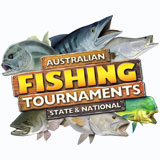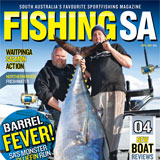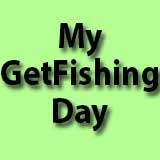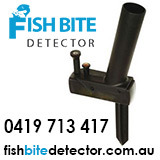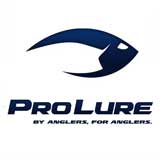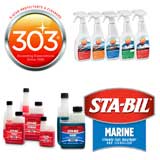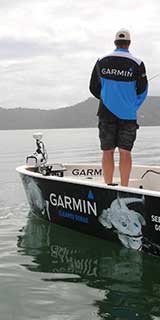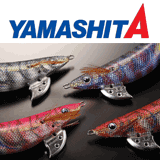Species ID
View AllSand Whiting
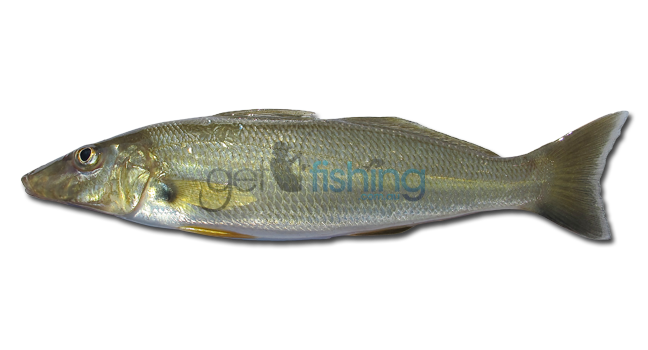
Sand whiting are a member of the family Sillaginidae, the smelt-whitings. They are very similar in appearance to other species of whiting in Australia and can be difficult to distinguish. They are distinguished from other species by a dark to dusky spot ar the base of the pectoral fin and an anal fin consisting of 15-17 soft rays. They have an elongate profile with long snouts and small downward facing mouths. They are silver in colour with yellowish pectoral, pelvic and anal fins and pale olive-coloured dorsal and caudal fins. They are a great eating table fish and fun sport on light line making them a very popular target for east-coast anglers. The nose of larger fish has a bluish tinge, giving rise to their nickname the Blue-nose whiting.
Other names
Whiting, Bluenose Whiting, Blue Nose Whiting, Sand Sillago, Silver Whiting, Summer Whiting
Common size
25-30cm
Related species
Yellowfin whiting (Sillago schomburgkii), Golden-lined whiting (Sillago analis), Southern school whiting (Silliago bassensis), Western school whiting (Silliago vittata)
Lifespan
Over 10 years
Habitat
Sand whiting inhabit sandy areas within estuaries, bays and coastal beaches at a depth generally between 0.5-6m. Within the estuary they frequent the sand/mud flats during the high tide and channels during the low tide. On the beach they prefer the surf zone and occur in shallow gutters and holes, corrugated trenches and divots, and also the edges of washy sandbars.
Reproduction
Sand whiting spawn twice per year where they form large congregations at the mouths of estuaries.
Diet
Sand whiting are predominantly bottom feeders that dig and sift through the substrate to prey on a variety of invertebrates including worms, prawns, crabs, molluscs and shrimp. They will less-regularly also eat small fish.
Catch care
Dispatch your whiting humanely and immediately after capture. Keep cool out of direct sunlight in a wet hessian bag (or similar), ice esky or an ice slurry of salt water for up to a few hours and refrigerates as soon as practicably possible.
Information courtesy of Andrew Badullovich, Merimbula NSW and DAFF QLD. Photos courtesy of Andrew Badullovich.
Where to fish
Sand whiting inhabit sandy areas within estuaries, bays and coastal beaches at a depth generally between 0.5-6m. When targeting whiting within an estuary focus on the sand flats during an incoming tide, particularly the upper reaches of the tidal front, and channel edges during the run out tide. On the beach, look for areas of interest such as shallow gutters and holes, corrugated trenches and divots, and also the edges of washy sandbars.
How to target
When targeting Sand whiting you have the option of bait fishing in estuaries, bays and beaches vs surface luring in estuaries and bays. When bait fishing use live or fresh bait and incorporate a slow retrieve with the occasional pause into your style. When surface luring constantly cover new ground, cast up current and retrieve with the tide, and vary the action and pace of retrieve. Throwing a pause into a fast erratic retrieve is dynamite on timid fish. To set the hook with whiting employ a slow lift or gentle lean rather than a sharp strike.
Rod & Reel
To get more enjoyment out of your Sand whiting fishing it’s best to adopt a finesse approach with a lightweight, light line outfit. In protected waters go for something like a 2-4kg 7 foot graphite spin rod and a 1000-2500 size reel to suit.
On the surf beaches use a light 10-12 foot rod and balance with a 4000-6000 size spin reel or a lightweight graphite Alvey.
Line and leader
- Bait: 4-6lb monofilament & 0.5-1.0m 4-6lb fluorocarbon leader.
- Lure: 2-4lb braid & 1.5m 4-6lb monofilament leader (the shorter the more action imparted).
Terminal Tackle
- Size 4-8 long shank hook, size 4-8 swivel, and size 0-2 ball sinker (slightly heavier in the surf).
- Fine gauge, roughly size 12 treble.
Best Lures
Small poppers or walk-the-dog style hard-bodied surface lures. For example, Bassday SugaPen 70’s.
Best Bait
The best baits for Sand whiting are live ghost nippers (nippers or yabbies), bloodworms, beach worms and pippies.
Hints and Tips
Sand whiting are generally caught in estuaries, bays and surf beaches from northern Queensland to Tasmania. Anglers adopt a finesse approach and use light line, lightweight outfits and live baits or surface lures to target them.
1) When fishing the sand flats cast into the sun where possible as silhouettes or shadows cast over the water easily spook Sand whiting.
2) When surface luring vary your retrieve and figure out what mood they’re in and what’s working best on the day.
3) Stopping and pausing a slow retrieved bait or fast, erratic retrieved lure is dynamite.
4) The ideal conditions for surface luring the flats are: rising barometer, sun in the face and wind at your back, casting up current and retrieving with the tide.
Rigging for surface luring
Targeting Sand whiting on surface lures is great sport and can be quite productive. Use a 2-4lb braid mainline and join it to a 1.5m, 4-6lb mono leader with a Double-Uni knot or similar. At the other end of the leader a loop knot (e.g. Lefty’s Loop) will enable walk-the-dog style surface lures freedom to move and zig-zag during the retrieve. Alternatively, tying a knot tight to the tow-point of a cup-faced popper will aid the popper to track straight during a constant blooping retrieve..
Rigging for bait fishing
Whether bait fishing from the shore or from a boat the rig you use remains the same, the only thing that differs is the amount of weight you use. Fishing a monofilament mainline can be beneficial as the elasticity reduces the chance of pulled hooks. Sand whiting rigs vary but a simple rig that works consists of a size 4-8 long shank hook, 0.5-1m monofilament leader, and a running ball sinker above a swivel. Bait up with a live nipper or beach worm and you’re in business.
Information courtesy of Audrew Balullovich, Merimbula NSW and DAFF QLD. Photos courtesy of Andrew Badullovich.
In Australia Sand whiting are distributed along the length of the east coast from Cape York, Queensland to Eastern Victoria and Tasmania.
5 stars. Sand whiting are a sweet-tasting table fish that can be caught all months of the year. The flesh is delicate and white and for this reason they are a commercially sought after species. They provide a low yield and have a row of tiny pin bones, but other than that they taste delicious when fresh and can be cooked with the skin on. When it comes to cooking they are best prepared simply. Lightly floured fillets with the skin on, shallow-fried in olive oil with a seasoning of cracked sea salt is hard to beat. They are also nice battered, barbecued, battered, crumbed, grilled, steamed and baked.

- Are a member of the family Sillaginidae (whitings and sand-smelts)
- Can grow up to 52cm in length
- Will sometimes bury themselves when alarmed
- One of the most important commercially targeted species in NSW and QLD
- Good eating







